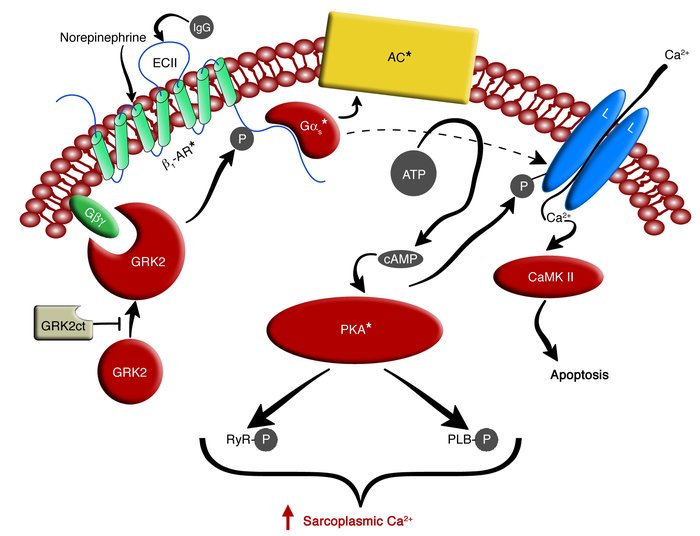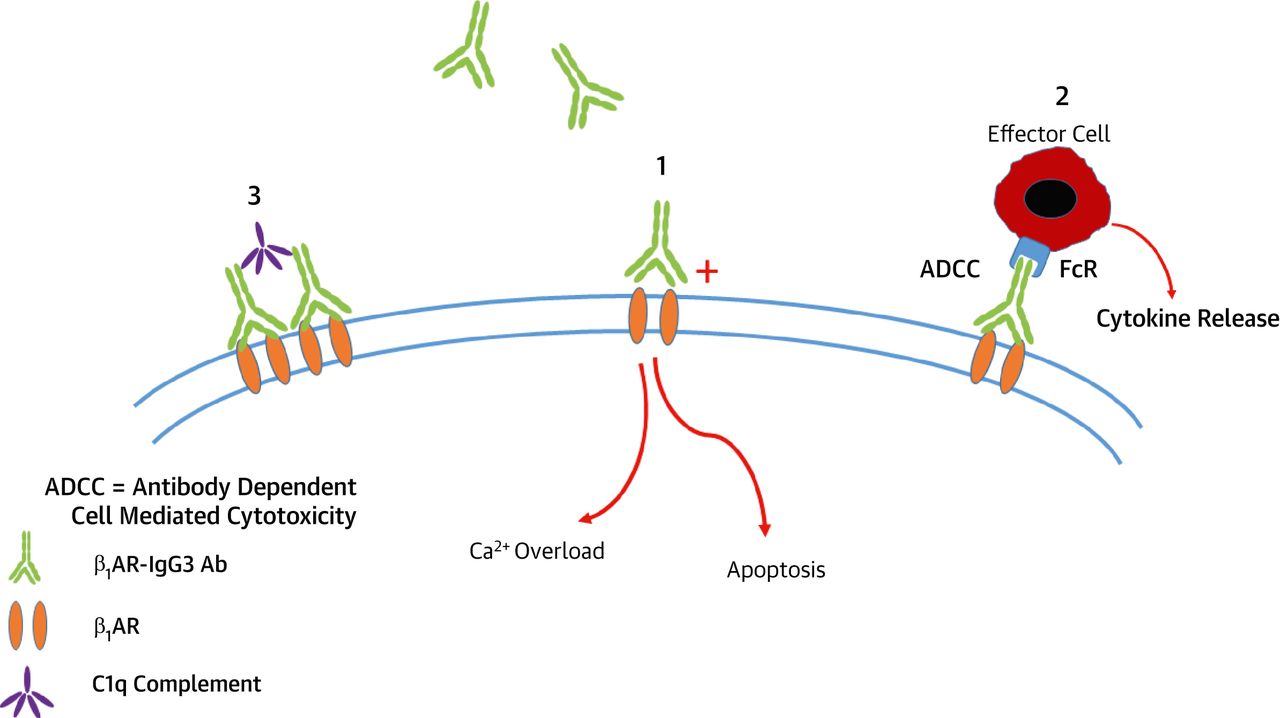NAA Services for Anti-β1 Receptor Antibodies
Creative Biolabs possesses advanced platforms and extensive experience in NAA (natural autoantibodies) detection and analysis services. We can provide high-quality NAA services for our customers all over the world. Currently, we offer a full range of anti-β1 receptor antibodies marker services for diseases diagnosis and therapeutic monitoring. Our state-of-art technical platform and professional scientists will be helpful to your projects.
Background of Anti-β1 Receptor Antibodies
The adrenergic receptors (also referred to as adrenoreceptors) are a type of cell membrane-bound protein receptors throughout the body that recognize the catecholamines, especially norepinephrine and epinephrine. Once these receptors bind to catecholamines and then stimulate the sympathetic nervous system, the autonomic nervous system contributes to the fight-or-flight response. The adrenergic receptors generally consist of α and β receptors, with a total of 9 subtypes. Beta-1 adrenergic receptor (β1 receptor) is a kind of a G-protein coupled receptor mainly distributed in the cardiac muscles.
Anti-β1 receptor antibody is an autoantibody produced by immune system specifically reacting with β1 receptor, which has been confirmed associated with many different heart diseases. Anti-β1 autoantibodies can trigger conformational changes in the receptor, weaken the receptor internalization. The combination of these two properties can produce bimodal effects on receptor activity that are significant for basal activity and chronotropic catecholamine responses of human cardiomyocytes.
 Fig.1 Schema for β1-AR-mediated cardiomyocyte stimulation and β1-AR desensitization. (Freedman, 2004)
Fig.1 Schema for β1-AR-mediated cardiomyocyte stimulation and β1-AR desensitization. (Freedman, 2004)
The Role of Anti-β1 Receptor Antibodies in Myocarditis
Myocarditis is an inflammation arising in the heart muscle. Symptoms generally include arrhythmias, chest pain, shortness of breath, fluid retention with swelling of legs, ankles and feet and fatigue. Complications may along with heart failure, heart attack or stroke, rapid or abnormal heart rhythms and sudden cardiac death. The pathological mechanism of myocarditis is unclear, but potential causes include viruses, bacteria, parasites, and fungi infections. The research found that autoantibodies to β1 receptors are significantly associated with several cardiac diseases. Autoimmune dysregulation and production of Anti-β1 autoantibodies cause cardiomyopathy and myocarditis have been seen in humans and animal models. In addition, a study on rat heart tissue sections demonstrated that high titer anti-β1 receptor antibodies of IgG class in most individuals with myocarditis. Thus, the detection of β1 receptor autoantibodies might offer a reference for the diagnosis of myocarditis.
 Fig.2 Potential Mechanisms Implicated in the Pathogenic Effect of β1 Adrenergic Receptor-IgG3 antibody. (Patel, 2017)
Fig.2 Potential Mechanisms Implicated in the Pathogenic Effect of β1 Adrenergic Receptor-IgG3 antibody. (Patel, 2017)
What We Can Do About NAA?
As one of the most professional service provider in NAA products and services, Creative Biolabs offers optimized services to help you detect anti-β1 receptor antibodies using the most comprehensive approach in a timely and cost-effective manner. In addition to a wide spectrum of NAA products is available for your choice, we also provide comprehensive NAA services with our well-established platforms and experienced scientists, including NAA detection, NAA profiling, NAA affinity measurement, NAA epitope mapping, and NAA Paratope Mapping, as well as custom NAA services based on the requirements of the clients to meet the specific demand.
Please contact us for more information.
References:
- Freedman, N.J.; Lefkowitz, R.J. Anti–β1-adrenergic receptor antibodies and heart failure: causation, not just correlation. The Journal of clinical investigation. 2004, 113(10): 1379-1382.
- Patel, J.K. The β1-Adrenergic Receptor IgG Subclass 3 Autoantibody in Dilated Cardiomyopathy: Friend or Foe? Journal of the American College of Cardiology. 2017, 69(8): 978-980.
Related Services:
- NAA Services for Anti-Sarcolemmal Antibody (ASA)
- NAA Services for Anti-Myolemmal Antibody (AMLA)
- NAA Services for Anti-Fibrillary Antibody (AFA)
- NAA Services for Anti-Interfibrillary (IFA) Antibody
- NAA Services for Anti-laminin Antibody
- NAA Services for Anti-M2 Receptor Antibodies
- NAA Services for Anti-MHC Antibodies
- NAA Services for Anti-HSP 70 Antibodies
- NAA Services for Anti-Tropomyosin Antibodies

